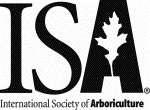
| Current Articles |
| Browse Archives |
| Search |
| Contact Us |
| AUF Home |
 |
Arboriculture & Urban Forestry Online
| Volume 34, Issue 1 —
January 2008
https://www.isa-arbor.com/Publications/Arboriculture-Urban-Forestry |
|
The Influence of Nitrogen Fertilization on Waterlogging Stresses in Fagus sylvatica L. and Quercus robur L. (View PDF) Glynn C. Percival and Ian P. Keary Abstract: The aims of this study were to determine the influence of nitrogen (N) fertilizers on tree tolerance under prolonged waterlogging conditions and investigate the effect of N fertilization on aiding tree recovery from waterlogging damage using containerized English oak (waterlogging-intermediate) and European beech (waterlogging-sensitive) as test species. English oak proved to be more waterlogging-tolerant than European beech. Tree vitality as measured by chlorophyll fluorescence, photosynthetic rates, leaf chlorophyll content, stomatal conductance, leaf and root protein concentration, and foliar N content was consistently higher in trees in which N fertilizers were added to the waterlogged solutions compared with trees waterlogged with tapwater only for 18 days. Measurement of light absorbance, light trapping, electron transport, and dissipation fluxes per leaf cross-section of photosystem II after the 18-day waterlogging period indicated a beneficial influence of N fertilization on leaf photosynthetic processes at the cessation of the waterlogging period. Addition of N induced greater resource allocation in favor of roots over shoots in both tree species. At the cessation of the 18-day waterlogging period and after a 10-day regeneration period, growth (leaf area, shoot, root, total plant dry weight) was constantly higher in N waterlogged trees compared with non-N waterlogged ones. In a separate study, recovery rates of trees as measured by chlorophyll fluorescence, photosynthetic rates, leaf chlorophyll content, and stomatal conductance over a 6-week period after the cessation of 18 days waterlogging were 30% to 50% higher in N-fertilized trees compared with non-N-fertilized trees irrespective of species. In all cases, nonfertilized trees had the least capacity for recovery. In addition, leaf area, shoot, root, and total plant dry weight were higher in N-fertilized trees compared with nonfertilized ones. Results of this investigation indicate 1) applications of N fertilizers enhance the tolerance of trees under prolonged waterlogged conditions; and 2) applications of N fertilizers after waterlogging stress would be of benefit to improve tree recovery rates and growth. From a practical point of view, N fertilization 14.5 g (0.51 oz) or greater N per liter (0.26 gal) of water is tentatively suggested based on preliminary results of this study. Keywords: Chlorophylls; chlorophyll fluorescence; English oak; European beech; photosynthesis; physiogenic stress; plant health care; protein; root deoxygenation; stress enzymes, stress tolerance |
Current Articles
| Browse Archives | Search | AUF Home | ISA Home
| Get Acrobat